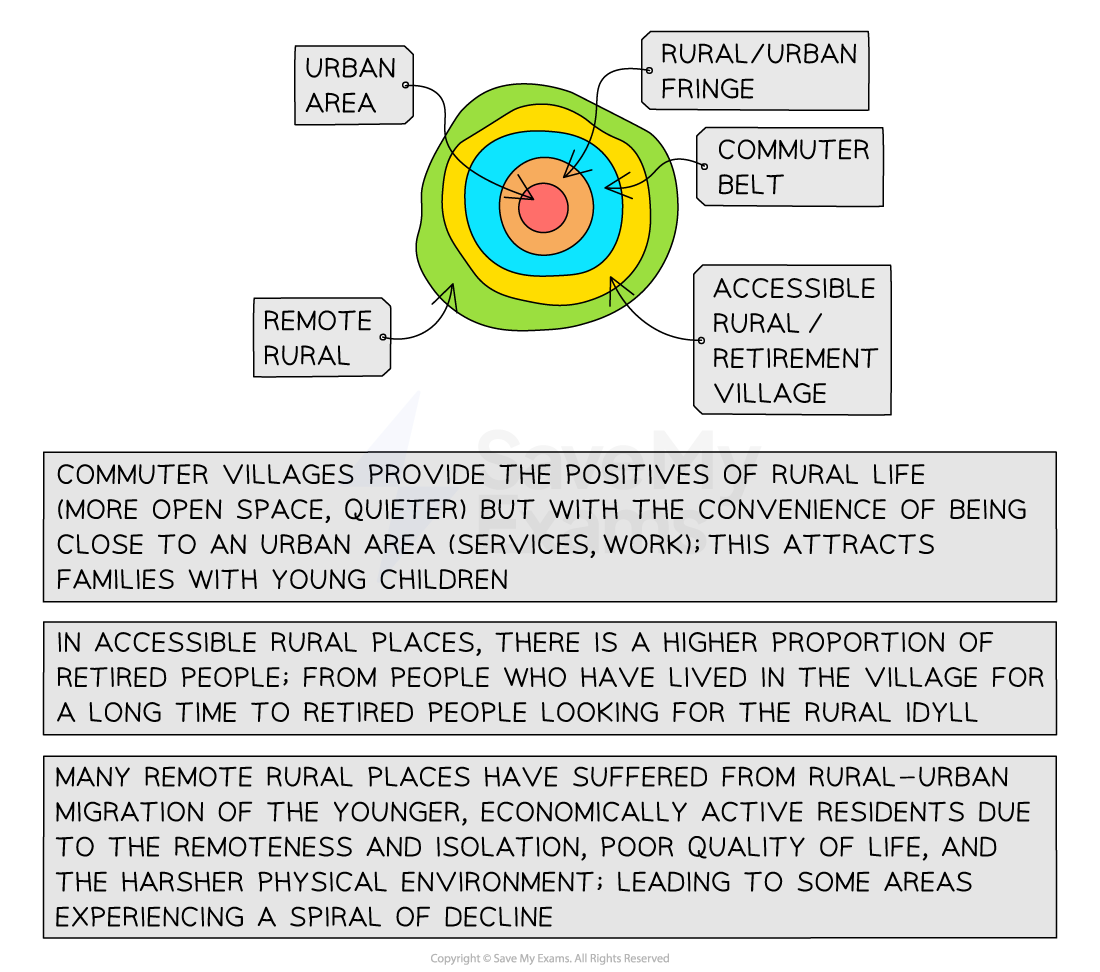Perception of Rural Places
- Rural places, like urban places, are viewed differently by different groups because of their lived experience and perceptions of these areas
- The perception will depend on:
- A person’s gender, ethnicity, age and life cycle stage
- How the person intends to use the rural space e.g. recreation and work
- The characteristics of the rural area based on their position on the rural-urban continuum e.g. commuter villages or isolated farms and hamlets
The rural idyll
- Rural places are often perceived as the ideal places to live by people living in urban areas due to:
- The scenic, natural landscapes of green fields, gently rolling hills and woodlands
- Old, traditional thatched cottages with white picket fences and flower gardens
- A relaxed, tranquil pace of life away from the hustle and bustle of urban living
- A strong sense of community, fostered through village activities e.g. cricket, socialising in the village pub and village fetes
- Rural places have low crime rates, which consist of minor and non-violent offences
- Some rural places have strong historical and cultural associations, such as Hardy’s Wessex and the Bronte country - made famous for being home to these popular British authors
- Hardy’s Wessex - the author Thomas Hardy wrote detailed descriptions of country life in the fictitious country of Wessex
- Idyllic depictions of thatched cottages set in peaceful surroundings, close to nature, were based on his home county of Dorset
- Hardy also portrayed the undesirable elements of rural life e.g. remoteness and limited opportunities
- Media representation can reinforce the rural idyll attitude
- TV programmes, like Midsomer Murders and Emmerdale, are set in attractive countryside locations
- Art and literature connections (e.g. Beatrix Potter and The Lake District) encourage tourists to visit and improve the economy of the area
Exam Tip
You can use YouTube and other video sites to watch past episodes of television series and get a sense of how rural and urban areas are depicted e.g. Bread for Liverpool and Shetland for Lerwick

